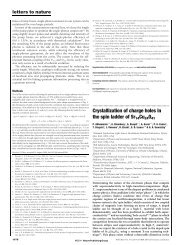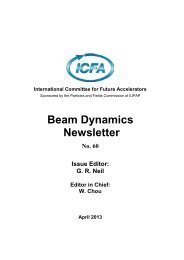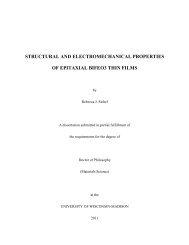PhD thesis - Evans Research Group - University of Wisconsin-Madison
PhD thesis - Evans Research Group - University of Wisconsin-Madison
PhD thesis - Evans Research Group - University of Wisconsin-Madison
You also want an ePaper? Increase the reach of your titles
YUMPU automatically turns print PDFs into web optimized ePapers that Google loves.
1Chapter 1Introduction1.1 Organic/inorganic interfaces in organic electronicsOrganic electronics have been aggressively studied for applications in electronic displays,sensors, radio frequency identification tags, smart cards and organic solar cells [1]. Thislarge range <strong>of</strong> possible applications can be realized by understanding the basic science ininvolved in the operation <strong>of</strong> organic electronic devices and the physics <strong>of</strong> organicsemiconductors.Interfaces in organic electronic devices such as organic field effect transistors (OFETs),organic light emitting diodes (OLEDs) and organic photovoltaics (OPVs) take part incharge injection and transfer which are crucial for operating devices. For example, thecathode and anode layers form contacts to an electron transport and hole transport layer [2-6]. The alignment <strong>of</strong> molecular energy levels between the electrodes and the transportlayers can be tuned by attaching self assembled monolayers (SAMs) to the metalelectrodes. The SAMs can alter the electrostatic potentials at the interface between metaland organic semiconductors and thus control the injection barrier to the organicsemiconductors [7-10].Photoinduced charge transfer between electron acceptor and donor layers is critical indetermining power conversion efficiency in OPVs [11-13]. In these devices, the absorption<strong>of</strong> light produces excitons in the electron donor layer that are subsequently dissociated at





